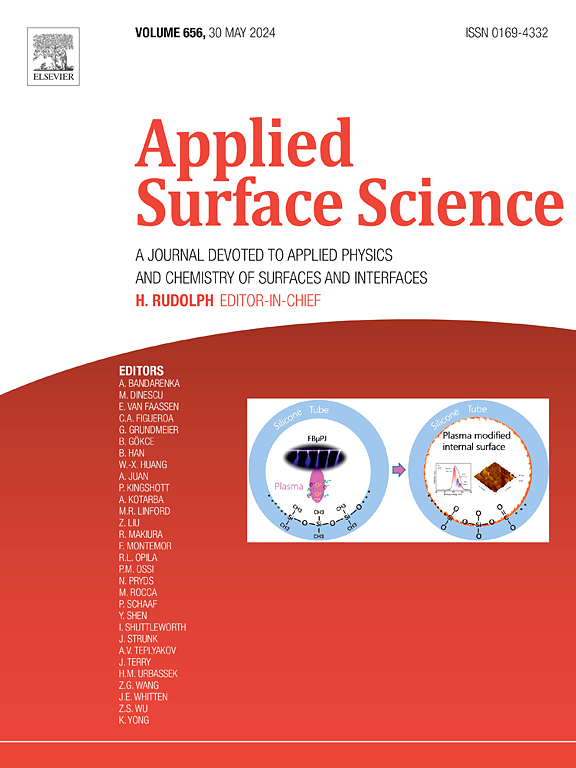插入层(HfO2, ZrO2, Y2O3, La2O3)对掺杂zr的HfO2夹层结构铁电性能和突触性能的影响
IF 6.3
2区 材料科学
Q2 CHEMISTRY, PHYSICAL
引用次数: 0
摘要
基于hfo2的铁电体(FEs)由于其多畴能力和非易失性而成为突触器件,受到了广泛的关注。然而,当这些FE薄膜应用于突触器件时,极化开关往往导致突触权重增强和降低过程中的非线性行为。在这项研究中,我们引入插入层结构来诱导去极化场,有效抑制突变极化开关,增加矫顽力场(Ec),以提高突触器件的性能。研究了不同插入层(HfO2, ZrO2, Y2O3, La2O3)对掺杂zr - HfO2 (HZO) FE性能的影响。进一步评估了突触器件的FE性能,包括在不同电场下剩余极化(Pr)的线性度、续航特性和周期间变化。在测试的材料中,HfO2作为插入层的效果最理想,由于其氧空位水平较低(6.6%),具有较好的续航能力(2 × 106循环)和最小的循环间变化(14.3%)。与没有插入层的ffet相比,插入hfo2的ffet器件表现出更好的突触重量控制,提供更多的状态和增强的线性增强和抑制。最后,使用MNIST数据集的模式识别模拟显示准确率为87.76%,比参考数据提高了3.75%。本文章由计算机程序翻译,如有差异,请以英文原文为准。

The effects of inserted layers (HfO2, ZrO2, Y2O3, La2O3) on the ferroelectric and synaptic properties of Zr-doped HfO2 sandwich structure
HfO2-based ferroelectrics (FEs) have gained significant attention as synaptic devices due to multistate capability enabled by multi-domain FEs and nonvolatile characteristics. However, when these FE thin films are applied to synaptic devices, the polarization switching often results in non-linear behavior during the potentiation and depression of synaptic weights. In this study, we introduced insertion layer structures to induce a depolarization field, effectively suppressing abrupt polarization switching and increasing the coercive field (Ec) to enhance synaptic device performance. The study investigated the behavior of Zr-doped HfO2 (HZO) FE properties using different insertion layers (HfO2, ZrO2, Y2O3, La2O3). The FE performance was further evaluated for synaptic devices, including the linearity of remnant polarization (Pr) under varying electric field, endurance characteristics, and cycle-to-cycle variation. Among the materials tested, HfO2 as the insertion layer yielded the most promising results, showing superior endurance (2ⅹ106 cycle) and minimal cycle-to-cycle variation (14.3%) due to its lower oxygen vacancy levels (6.6%). The HfO2-inserted FeFET device demonstrated improved synaptic weight control, providing a more states and enhanced linearity in potentiation and depression compared to FeFET without insertion layer. Finally, pattern recognition simulations using the MNIST dataset revealed an accuracy of 87.76%, which represents an improvement of 3.75% over reference.
求助全文
通过发布文献求助,成功后即可免费获取论文全文。
去求助
来源期刊

Applied Surface Science
工程技术-材料科学:膜
CiteScore
12.50
自引率
7.50%
发文量
3393
审稿时长
67 days
期刊介绍:
Applied Surface Science covers topics contributing to a better understanding of surfaces, interfaces, nanostructures and their applications. The journal is concerned with scientific research on the atomic and molecular level of material properties determined with specific surface analytical techniques and/or computational methods, as well as the processing of such structures.
 求助内容:
求助内容: 应助结果提醒方式:
应助结果提醒方式:


